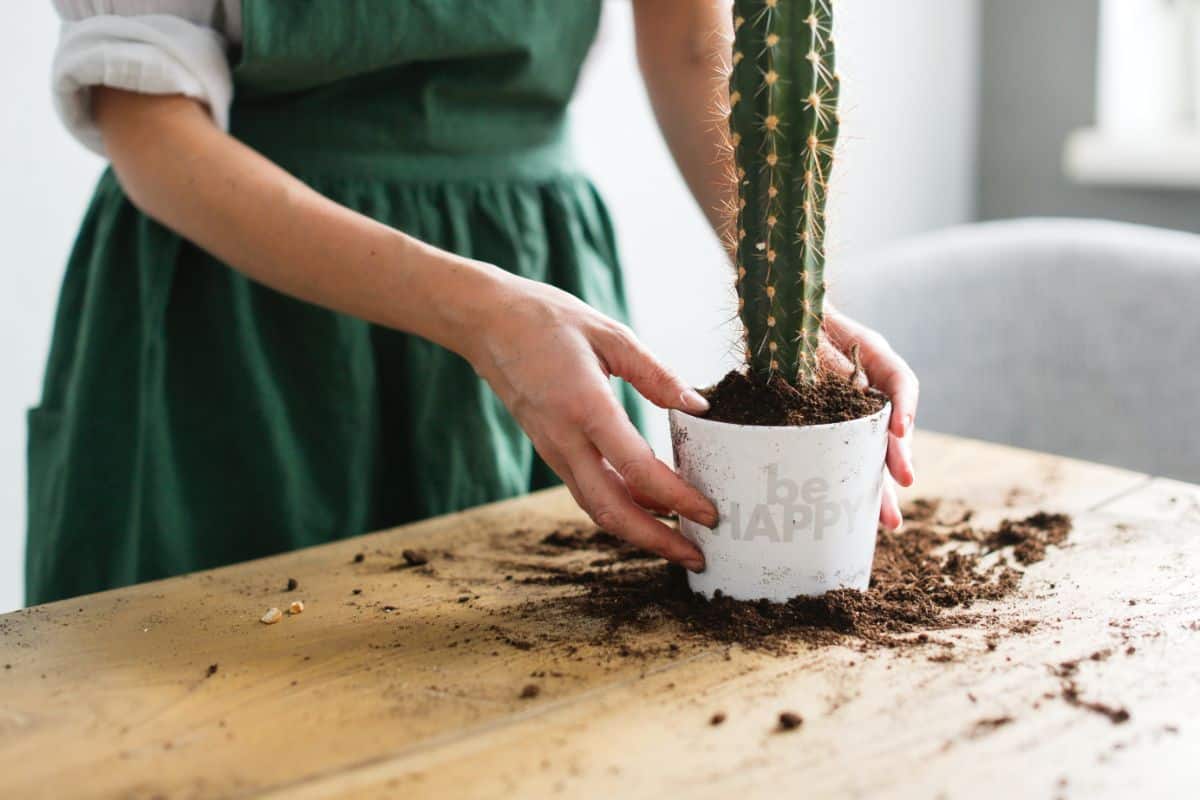
Before you begin the process of planting your cactus, you need to take a few precautions to keep both you and your prickly plant safe. Cacti are often covered in sharp spines that can be quite painful once embedded in your skin. Additionally, many species are quite fragile and may be permanently damaged if they’re handled incorrectly.
Cactus Planting Basics
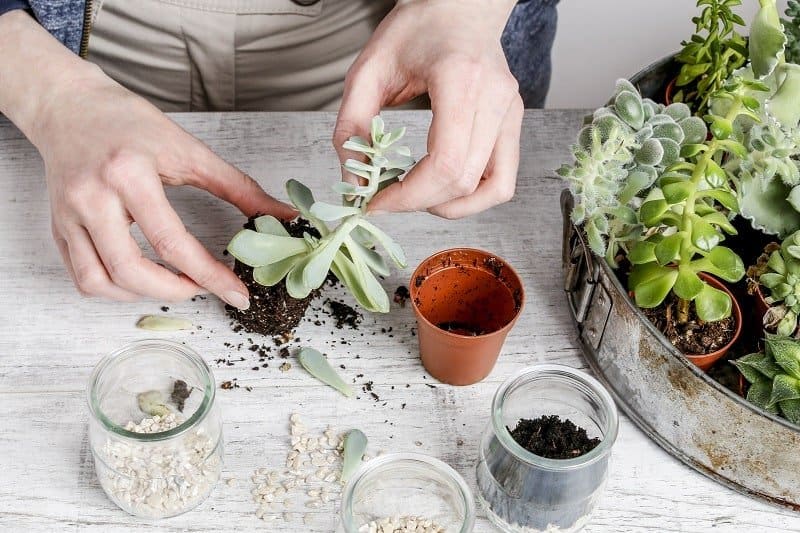
Depending on the species and size of the cactus you’re planting, you may want to use some type of puncture resistant protection to move it into position. Leather or nitrile-coated gloves work well, as do Kevlar gloves. Many gardeners also choose to use a thick towel or scrap of carpet, especially with larger cacti.
For smaller cacti, you can even use tongs or newspaper. With especially tiny cacti, you may even consider using chopsticks to maneuver them into their new pot.
Regardless of the type of protection you choose, you still want to handle the cacti carefully. Using a delicate touch will help prevent damage to the plant, as well as to your hands. If you want to know more about handling prickly plants, you can read more about safe cactus handling practices here.
It’s crucial that you plant your cactus in the right type of soil. That bag of potting mix you used in your flower bed won’t work for cacti. Cacti need fast-draining soil, which typically contains larger particles like sand, gravel, perlite, and bark. Avoid soil with too much clay as it has a tendency to retain more water than cacti can handle. Your local nursery or gardening center likely sells a potting mix made for succulents and cacti, or you can always make your own soil mixture.
No products found.
The key to safely planting your cactus is to have the pot prepared before you begin handling the plant. Place a small amount of soil in the pot to elevate the roots to the appropriate level. If your pot is quite shallow, you may not need to do this.
Once this base layer of soil is in place, you can gently set the cactus on top of it and begin filling in space around the roots. Depending on the type of cactus you’re planting, you may need to hold it in place while you add the soil around it. This can be done using your gloved hand, towel, or whatever you moved the cactus with in the first place.
After you’ve added an appropriate amount of soil around your cactus, you’re ready to step back and admire your work!
Read Article: How to Get Rid of Whiteflies
Simple Cactus Care
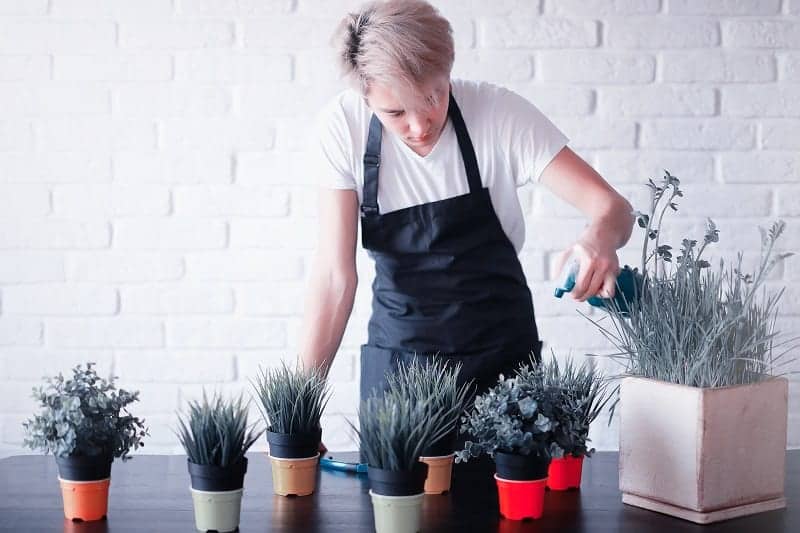
Getting the soil right won’t do you any good if you plant your cactus in a container without adequate drainage. With drought-loving plants like cacti, drainage is essential. No matter what type of container you choose, just make sure it has a drainage hole to allow the excess water to escape. Without proper drainage, your cactus is at risk of developing root rot.
Cacti love sunlight. Remember, they typically grow in arid climates with not much to shade them. Most species will do well in full sun, but it’s important to research the plants you bring home to make sure you’re giving them the correct care. You’ll also want to check your new cactus’ preferred temperature range. Most species don’t do well in frigid temperatures and some may not be able to handle extremely hot weather. You may also want to give your cactus an adjustment period before thrusting it into a full day of bright light. Otherwise, your cactus may get sunburned.
Water is one of the most important aspects of cactus care. Too much and your cactus’ roots will drown and rot, too little and your cactus will wither and die. Most gardeners water their cacti approximately every 7 to 10 days, but you may need to make adjustments during particularly hot or cold weather. A good rule of thumb is to check the soil about a half-inch or so beneath the surface of the soil. The surface may seem dry, but if the soil is moist below you need to wait a few more days before watering.
At this point, you may be wondering how fast your cactus will grow. If you’re an impatient gardener, you may be disappointed to learn that cactus tend to grow quite slowly. Remember, they’re meant to survive pretty harsh conditions and they wouldn’t be able to do that if they doubled in size every year. Additionally, different species may grow at different rates. Cacti from especially inhospitable climates may grow more slowly than those from more comfortable climates.
How to Root a Cactus
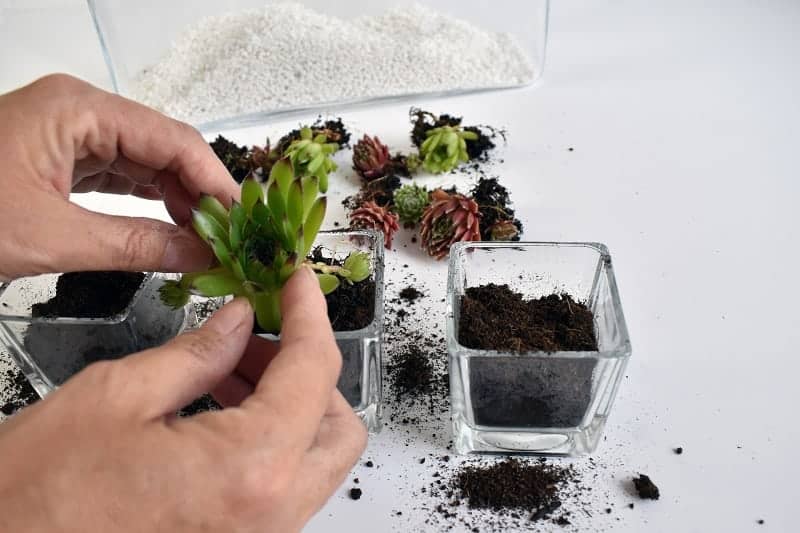
So, you’ve taken your first cactus cutting and are ready to replant it. How do you get your cactus to grow roots? The process is simple: you just wait. Nature does this all the time and all you need to do is wait for her to start the process. After taking your cutting, it’s best to let it dry out for several days to allow the fresh cut to callous. This prevents the cutting from being infected by bacteria or fungi in the soil.
After your cactus cutting has calloused, it’s time to plant it. Your local nursery or gardening center may have a product called rooting hormone that you can use to speed up the rooting process, but this isn’t necessary. You can simply plant the cutting inappropriate soil. It’s important to note that you don’t need to water your cactus for the first few weeks after planting as it won’t have any roots to absorb the water anyway. After a few weeks, you should begin to notice tiny roots sprouting from your cutting. Now you can begin watering your cactus and treating it as you would a mature plant.
Cactus Planting Problems
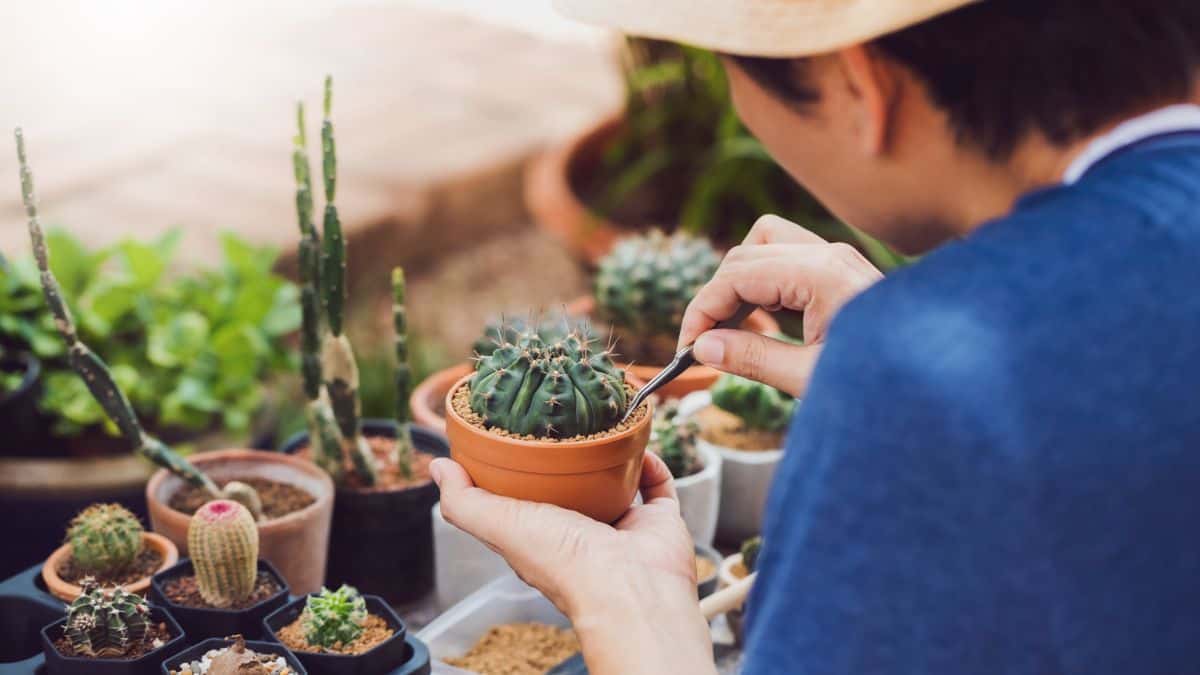
Sometimes, you think you’ve done everything right and your cactus just doesn’t seem to be thriving. Well, you’re not alone. Growing succulents and cacti is a lifelong learning process and with every plant, you grow, you’ll become a better and more knowledgeable gardener.
If you’ve followed the basic guidelines outlined in this article and your precious plant is still looking a little under the weather, you may find yourself wondering, “Why is my cactus dying?”. Well, unfortunately, there is no single answer. Your cactus may have fallen victim to pests or disease.
Be sure to thoroughly examine your cactus for signs of a pest infestation. Common pests include mealybugs, gnats, and mites. You can find more information on how to deal with common cactus pests here.
If you’re curious about how you can save a dying cactus, you may be disappointed to learn that it depends on what’s causing your plant’s health to decline. If you catch your cactus early in its decline, you may be able to save it, but in most cases, you may need to cut your losses and move on. With pests, treatment may be as simple as spraying your cactus with a product such as a neem oil.
Rot is also a common problem with cactus. You may notice parts of your cactus getting soft or mushy. If it’s possible to remove the mushy sections of your cactus before the damage spreads, you may be able to save the plant. If the stem or base of the cactus has become soft, you may also be able to take cuttings from the branches that haven’t been affected. Unfortunately, if the rot has spread through the root system, there is very little you can do.
You Might Also Like:


Cid Young
YOUR TITLE IS MISLEADING.
I expected to see techniques for planting a cactus but instead, you only used succulents. No tip how to plant or re-pot spiny, prickly things!
Iwas hoping for a few clever nuggets!
Nik Peck
Very helpful for a newbie like me, thanks!